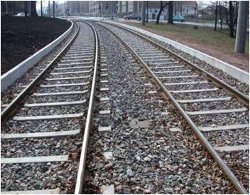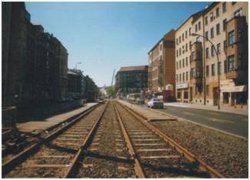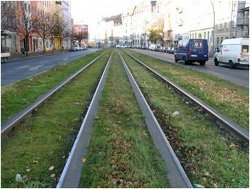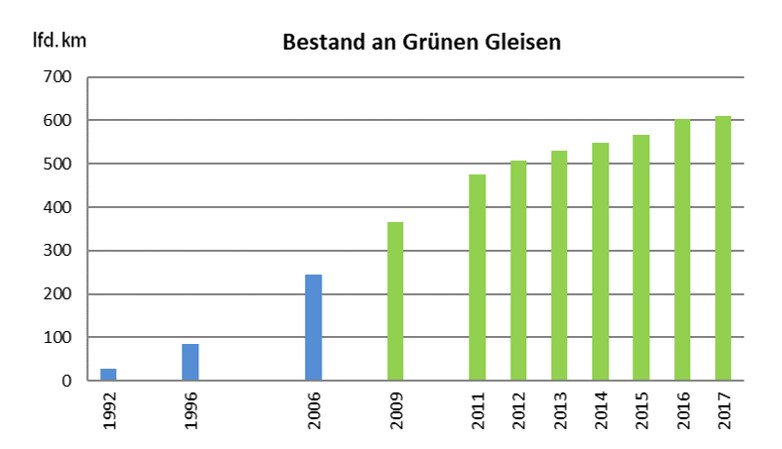General Information on Green Tracks
- Green tracks are not an end in themselves. They contribute to the improvement of the cityscape and create green spaces in the city with all their (locally different) positive influences on the microclimate, the binding of fine dust and the reduction of noise pollution. Thus, 4 km of green single track result in a green area of 1 ha.

|

|

|

|
Ballasted tracks in Chemnitz and Berlin before and after greening (Photos: NIRA, IASP)
- These ecological effects and their social benefit are often not known. For sensitization of transport companies and municipality regarding implementation of track greening the network acquires technical knowledge (see Effects and functions or other files in downloads). This way municipality shall be initiated to support the greening also financially for example the ongoing costs of maintenance.
- Surveys of transport companies by the network consolidate manifold information on the green track status, e. g. general problems and conclusion for development needs. These questions are integrated into the work of the network. Our aim is to involve many transport companies. A yearly up-date of the track greening status in Germany is sought for.
- According to the current status of feedback and evaluation (11/2017), there are at least 600 km of green single track in Germany.
- In 2013, the then 425 km single track divided into about 88.5 % grass, 3.5 % sedum on mats, 8 % sedum on substrate. On average, the number of green tracks in Germany has increased by approx. 20-25 km single track per year since 2009.

The data indicate minimum values, as not all transport companies had data available. Green Track Network Survey Stand 11/2017

